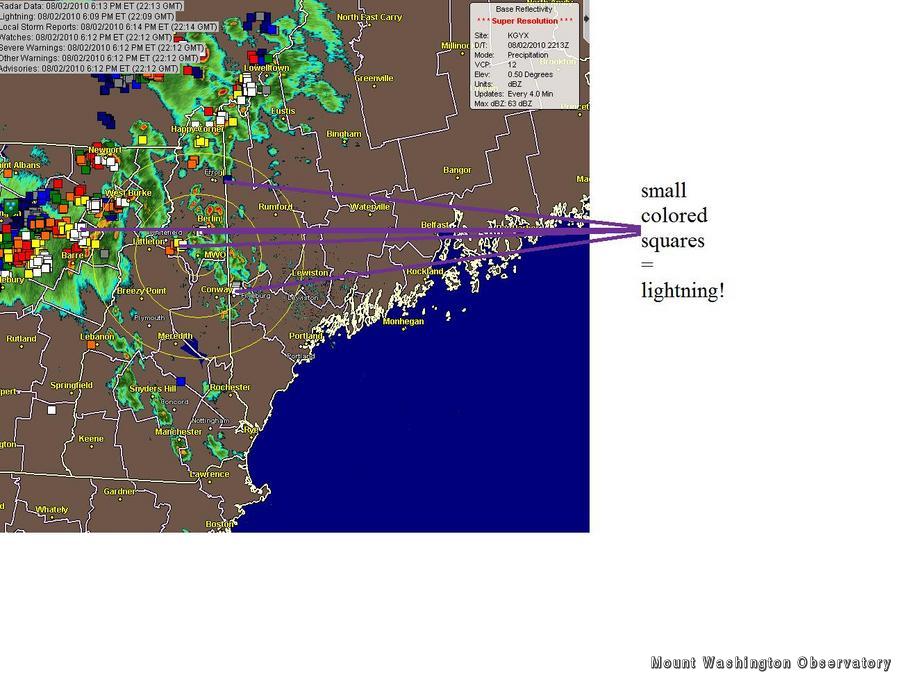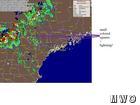NULL
2010-08-02 17:23:56.000 – Stacey Kawecki, Observer and Meteorologist
shiny
Who ever knew that small colored squares could ever invoke such excitement amongst the summit dwellers? It’s amusing how merely seeing the little squares approach the center circle on a screen seems to fill the room with electricity, especially since the squares symbolize cloud to ground lightning strikes.
After a rather chilly start to the week, high pressure has slid offshore and is moving slowly south. The resulting southwest flow opened the gates to the warm, moist air in the Gulf of Mexico. The daytime heating, shortwave trough, and the fact that the air is pushed up and over mountains (a lifting mechanism) provided ideal conditions for isolated thunderstorms. However, there really isn’t too much upper level support; as darkness descends, the intensity of the storms will diminish.
Tomorrow we’ll probably see a similar storm situation. With warm air in place, day time heating, and another shortwave approaching, storm development will likely occur in the late afternoon. Even if the lightning doesn’t quite reach the summit, as long as those small, colored squares pop up on the radar screen, the observers, interns, and volunteers will find something to spark their interest.
Stacey Kawecki, Observer and Meteorologist
An Autumn Above the Clouds on Mount Washington
An Autumn Above the Clouds on Mount Washington By Cassie Farnsworth I don’t know how many times in life you get to say “it was exactly what I hoped it would be,” but my
2025 Holiday Staff Picks
2025 Holiday Staff Picks By Brandi Malloy 2026 is just a few weeks away, and the season of giving is in full swing! From Nimbus plushies to yeti beanies, we're incredibly grateful for your
Supporter Spotlight: Colleen Gendron
Supporter Spotlight: Colleen 'Coco' Gendron By Wendy Almeida In the 1970s, Colleen 'Coco' Gendron was introduced to hiking by a close friend’s father, an avid hiker and Appalachian Mountain Club instructor, who shared stories of Mount





